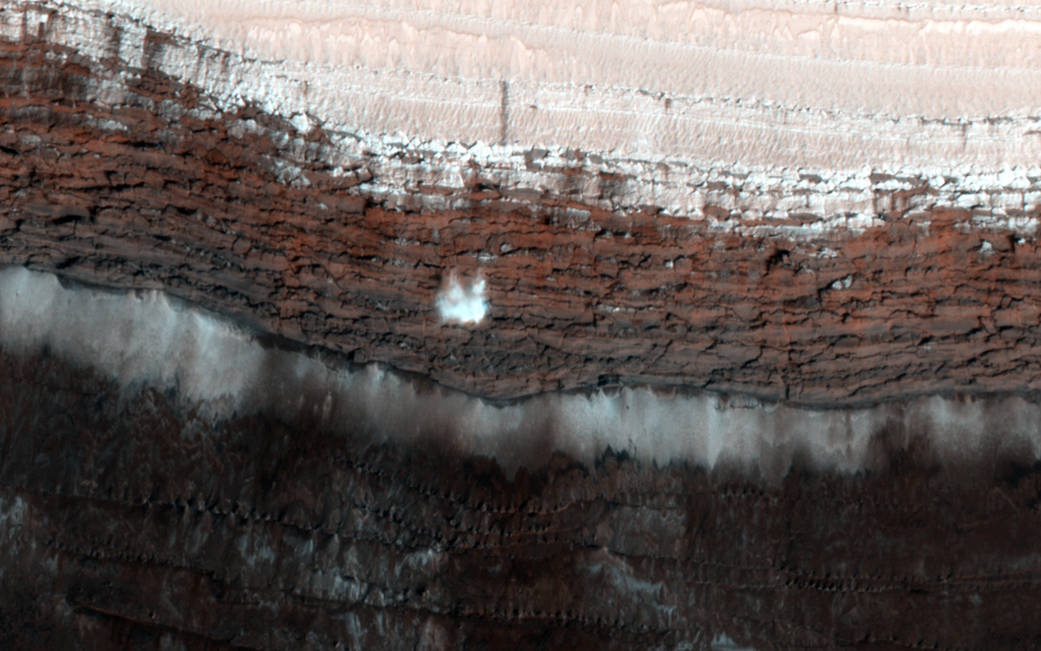
This scarp at the edge of the North Polar layered deposits of Mars is the site of the most frequent frost avalanches seen by the HiRISE camera aboard NASA’s Mars Reconnaissance Orbiter. At this season, northern spring, frost avalanches are common and HiRISE monitors the scarp to learn more about the timing and frequency of the avalanches, and their relationship to the evolution of frost on the flat ground above and below the scarp.
This picture managed to capture a small avalanche in progress, right in the color strip. The small white cloud in front of the brick red cliff is likely carbon dioxide frost dislodged from the layers above, caught in the act of cascading down the cliff. It is larger than it looks, more than 20 meters across, and (based on previous examples) it will likely kick up clouds of dust when it hits the ground.
The avalanches tend to take place at a season when the North Polar region is warming, suggesting that the avalanches may be triggered by thermal expansion. The avalanches remind us, along with active sand dunes, dust devils, slope streaks and recurring slope lineae, that Mars is an active and dynamic planet.
This view is one image product from HiRISE observation ESP_042572_2640, taken Aug. 26, 2015 at 1:30 p.m. local Mars time, at 83.887 degrees north latitude, 235.068 degrees east longitude.
HiRISE is one of six instruments on the Mars Reconnaissance Orbiter. The University of Arizona, Tucson, operates HiRISE, which was built by Ball Aerospace & Technologies Corp., Boulder, Colorado. NASA’s Jet Propulsion Laboratory, a division of the California Institute of Technology in Pasadena, manages the Mars Reconnaissance Orbiter Project for NASA’s Science Mission Directorate, Washington. Lockheed Martin Space Systems, Denver, built the orbiter and collaborates with JPL to operate it.
Image Credit: NASA/JPL-Caltech/University of Arizona
Caption: Paul Geissler




























